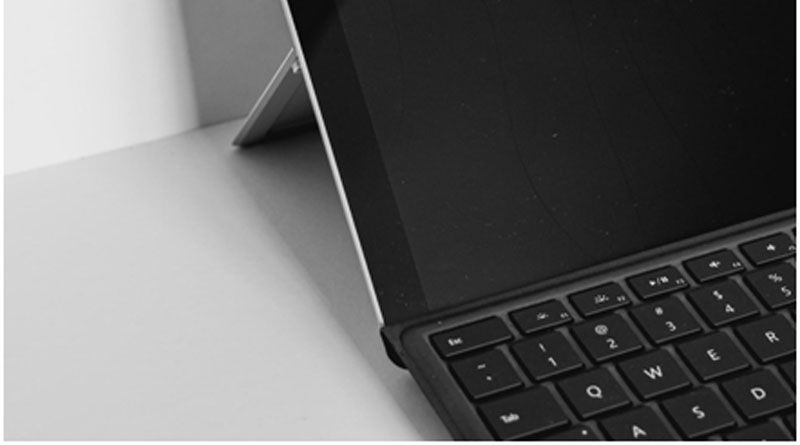Computers are machines that rely on physical and digital components to work. When your computer begins to perform poorly, you will need to find out what the problem is. Determining if your computer issues are hardware or software-related is the first step in deciding how to fix the issue.
There are a few distinct characteristics that separate hardware and software issues. Learning the difference between hardware and software is key to determining how to solve your PC problems. Although operating systems and programs can sometimes tell you what is wrong, there are times when you have to figure it out yourself.
What is Hardware?
Hardware refers to the physical components of a computer, including your screen, keyboard, mouse, hard drive, fan, wiring, and anything else that you can touch in a computer is hardware. Since hardware is physical, it can break down, sustain damage, or wear out over time and cause issues with your computer’s performance.
Determining hardware issues sometimes involves using your senses to determine a change. For example, can you see a crack, can you hear an odd sound or smell something burning? Fixing a hardware issue is often simple; it’s merely swapping the old for the new, and you are back on track.
What is Software?
Software is everything else in your computer that isn’t physical; you can’t touch, see, feel, smell, or taste software. It is the digital infrastructure and modules that make everything in the computer work. It includes your operating system, web browser, and applications. These digital components can also be changed and manipulated at will. If they experience any glitch, then your computer’s performance will suffer.
Software issues are usually harder to solve. They’re often identifiable by the error message received its link to other software, which hardware it uses to run, etc. So solving a software issue starts with a more diligent investigation.
Common Hardware Issues
Hardware issues are often a more straightforward fix. You may need to either clean, repair, or replace the hardware. Here are some hardware issues you may come across:
- Blue Screens – sometimes called blue screen of death (BSoD) or blue screen, error screen stop error, or exception error. It is an error message that appears when your computer has reached a point where it can no longer operate safely. Several issues can cause blue screens, but it is usually because of hardware problems such as faulty hard drive, motherboard, graphics card, RAM, or inadequate memory storage.
- Slow Downloads – Issues with your internet connection typically cause slow downloads. Your bandwidth could be slow due to a faulty internet connection. It can be because of a weak internet connection, damages to your network cable, or a router at the end of its life.
- Corrupt Files or Delays Opening Files – If your hard drive’s mechanical components fail, then your computer cannot finish writing data to a file or segments of the file become inaccessible. That is how data is commonly lost since corrupted data is unusable unless fixed.
- Computer Shuts Down Suddenly – This is generally caused by a failsafe built into every computer; it immediately shuts down if the device overheats. You could be overworking your computer, for example, playing a graphics-heavy game. Or your fan could be faulty; the fan is what keeps hardware components from overheating.
Common Software Issues
Software issues are a bit more complicated than hardware issues. The number of problem areas can increase the more software programs you install. Here are a few common software issues you can come across:
- Slow Computer – If it takes time to start your computer, open a program, or run a process, the issue could be the software. The software that is running could be too large for your memory to run smoothly. Alternatively, there could be too many programs running in the background, taking up too much memory space.
- Attachments Won’t Download – This can occur because of a conflict between your antivirus, antispyware, or firewall software with the email antivirus scanner. A full download or history cache can also be a cause.
- Pop-up Ads – If you see endless pop-up ads, you could have downloaded a bad program or browser extension.
When to Seek Professional Help
Considering that the hardware and software work in tandem to operate a computer, it can sometimes be challenging to discern the issue. When a problem is persistent or unclear, you should consider using local computer services and repairs professionals if it’s a software or hardware issue. Several issues can be both caused by software and hardware, and you may need professional help determining which it is:
- App Commands Aren’t Working – This can happen due to faulty drivers or when there isn’t enough memory available.
- Slow Internet – Slow web browsing could indicate a connection issue, malware, or an overextended browser.
- Keyboard and Mouse Aren’t Working – This can result from debris in the hardware, aging parts, or the wrong settings.
- Computer Keeps Restarting – This is sometimes due to a faulty update, malware, motherboard, or graphics card.
Simple Diagnosis
Determining what kind of issue you are facing takes you one step closer to a solution. There will be times when the problem is due to both your hardware and software. Nonetheless, do not despair in the face of a poorly performing computer; you now know how to diagnose it.

Namaste UI collaborates closely with clients to develop tailored guest posting strategies that align with their unique goals and target audiences. Their commitment to delivering high-quality, niche-specific content ensures that each guest post not only meets but exceeds the expectations of both clients and the hosting platforms. Connect with us on social media for the latest updates on guest posting trends, outreach strategies, and digital marketing tips. For any types of guest posting services, contact us on info[at]namasteui.com.

